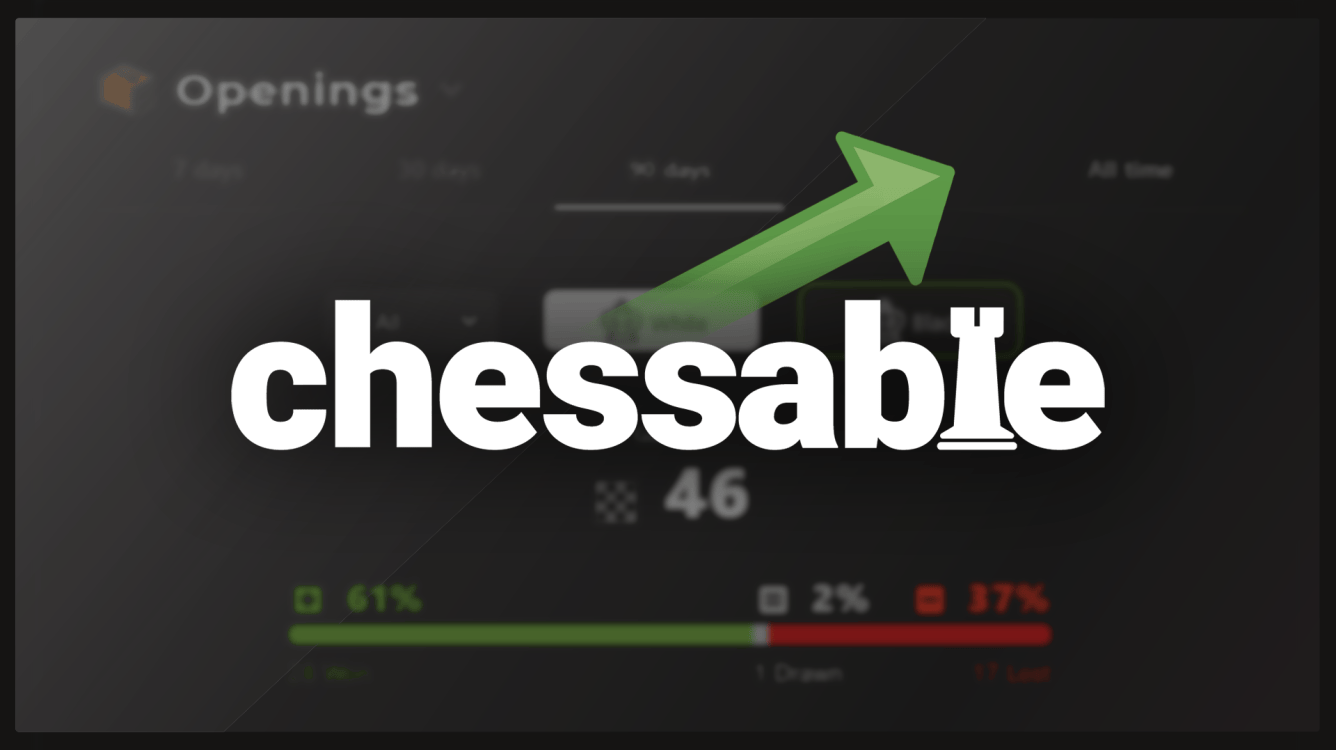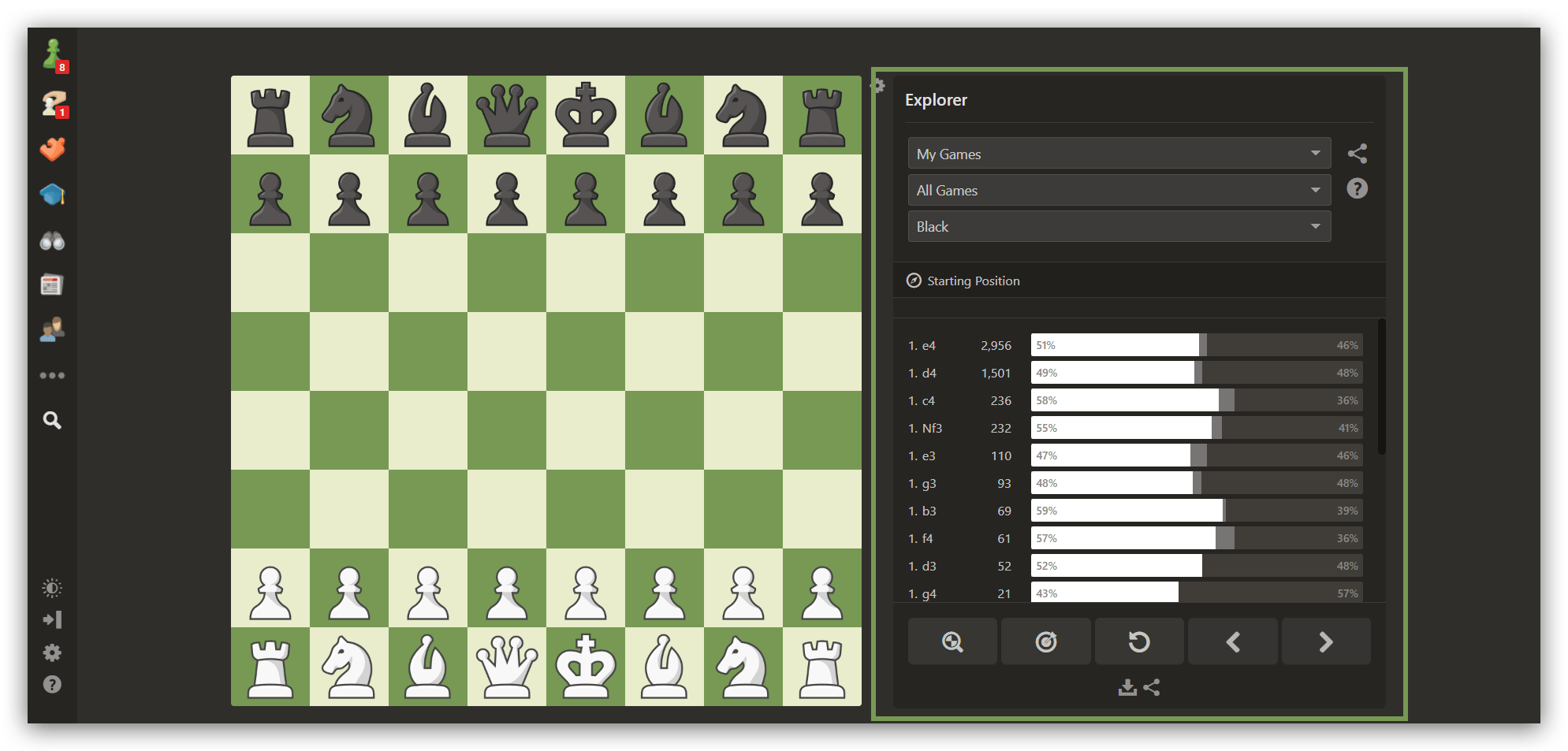
How To Optimize Your Opening Study With Chessable
When initially working with beginner students, I am often told something like, "I struggle to remember opening theory that I have studied." This is because their study is not taking place in the right way to optimize their results. Luckily, Chessable can be of great help to address this issue—especially when you use it in the right way.
Here's what you need to know to optimize your opening study with Chessable:
- Passive vs. Active Learning
- Why Study On Chessable?
- Picking An Opening Repertoire
- Use Your Own Data
- Bonus Step: Study Master Games
- Conclusion
Passive vs. Active Learning
Let’s kick things off by looking at a bit of data gathered from a few Psychology and Education journals. Learners retain approximately:
- 5% of what they learn from a non-interactive lecture or video.
- 10% of what they learn from reading.
- 30% of what they learn when they participate in an engaged demonstration.
- 50% of what they learn when engaged in a targeted discussion on the subject matter.
- 75% of what they learn when they use deliberate practice strategies on what they learned.
- 90% of what they learn when they teach someone else.

As you can see, the single greatest factor for retention, recall, and mastery is the use of an active learning approach when learning a new subject. Taking this into account, it is clear that if you want to remember opening theory, you have to learn it actively, which takes us to the next point.
Why Study On Chessable?
Chessable has an interactive training system where, after learning a specific line, you're asked to make the moves over the board yourself. Especially when reviewing the material, you're faced with a position and tested on whether or not you can play the correct move, which forces you to think for yourself. Only if you miss a move you'll see what you should've played, along with an explanation of why that was the right approach. This ensures that you don't get answers passively spoon-fed to you during your training.
Chessable also provides the spaced repetition training you need for mastery. This involves reviewing information at increasing intervals over time. Instead of cramming all the material in one session, you're "forced" to consistently work on your openings, which brings much better long-term results.
Personally, I also like the way Chessable gamifies the learning experience by awarding students with points after every correct move they play. Repeating an opening variation 500 times might not be that appealing. However, if you're trying to rake in points to be on top of the leaderboard, it's much easier to do it. As I near a thousand-day streak on Chessable, I think the reader knows where I stand on consistency with daily training.
Now that you know why I like Chessable so much, it's time to get your hands dirty and begin the process of studying your openings.
Starting the Process
The first step is to choose your opening repertoire. As a beginner, it's usually good practice to select one opening for White (usually starting with 1.e4 or 1.d4) and two for Black (one against 1.e4 and another against 1.d4). This will cover most of your games and optimize your studies since chess opening theory is incredibly vast, and most people with regular jobs or other duties don't have the time to learn it all.
Nowadays, there is a large number of resources available, so I strongly recommend selecting reliable and tested information. You do that by making sure the content is up-to-date and from reputable authors. Place less of a focus on the number of stars something has or how popular it is and more on the substance of the reviews of the courses and books by players similar to your strength.
If you are struggling with what openings to choose, I would suggest checking out my appearance on the Adult Chess Academy podcast. You can also check out Chess.com's Openings page, where you will find summarized information on the most popular chess openings. Make sure you pick an opening that suits your style: You can play the Sicilian if you're an aggressive player or the French if you like calmer games, for example.
Prioritizing The Right Lines
Keep in mind that some opening texts are organized with fluff and low-frequency lines up front. Optimize your study by prioritizing high-frequency lines (typically the mainlines) and/or the lines that occur most frequently in your games. This is another area where Chessable can help. You can use Chessable's Priority Lines feature to focus only on the variations that happen more frequently.
Take Giri's Najdorf course, for example. Out of the 1055 variations you can learn and practice, only 287 of them are frequently played online. While you might miss some nuances here and there, you can significantly reduce the amount of material you have to study, and you will still be booked up for most of your games.

Use Your Own Data
Now that you have the resources and the material to study, it is time to put your knowledge to the test! As soon as you have a working understanding of your openings, begin playing games, and play a lot. This will test your mastery of what you have studied and build a very useful dataset for improvement.
As GM Alexander Kotov once wrote, "Only a severe self-critical outlook will help a player to assess his strong and weak points and so further the process of improving his play."
Keep in mind that the best resource for improvement is going to come from your own games. Are you underperforming in certain lines or variations? This is a starting point for problem-solving in order to turn your weaknesses in the opening into strengths.
You can find this information by going to Chess.com's Explorer page and selecting the My Games option from the dropdown menu to the right. You will see your performance against each move that you make on the board. Play out the opening moves that you learned in your Chessable courses. Whenever you see a bad result, go back to Chessable and work on that specific variation.

Bonus Step: Study Master Games
While this article is aimed at the beginner who wants to start their opening study, here's a bonus tip for the more advanced students. In addition to directly training critical opening lines, the single most rewarding activity for improvement is game analysis.
To bolster and deepen your understanding of your openings, analyze the games of modern players who specialize in playing your opening systems. The analysis will give you a better understanding of the typical plans, motifs, and tactical ideas as the games focus directly on the positions you play.
Which players should you follow? Typically, you should look for games of players who are around a FIDE rating of 2600. Many of them consistently play the same openings to put away much lower-rated players in open tournaments. These are the players that have clear mastery of their opening craft of playing for the win and will crank out model games for us to learn from.
In my course Master the French Defense, I use GM Georg Meier as one of those great example players to follow. As the French Defense is his main weapon against 1.e4, he falls right into that category. You can do the same with any opening in your repertoire.
Conclusion
Let’s recap some of the main points:
- An active learning approach in your study is essential for retention and improvement.
- Pick an opening repertoire that suits your style.
- Prioritize your openings study based on the frequency of variation occurrence in your games and focus on variations where you have the worst results.
- Use data from your own games to direct your study to fix problems.
- As an extra step, find specialist players of your openings and analyze their games.
How do you study openings? Let us know in the comments below!


